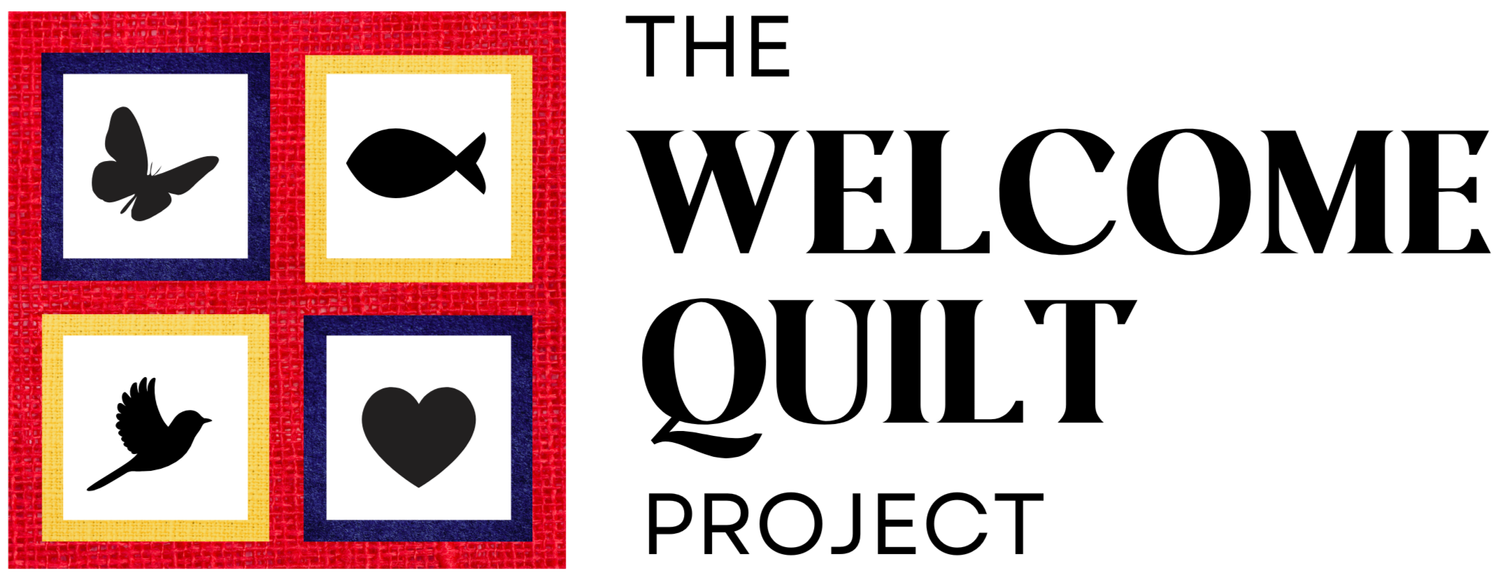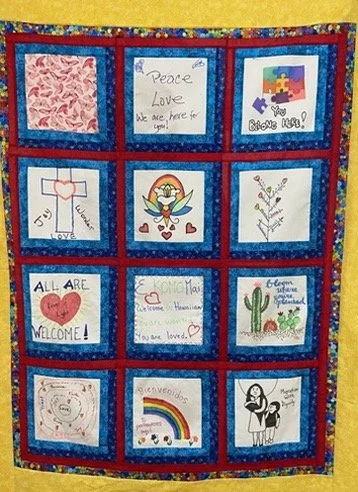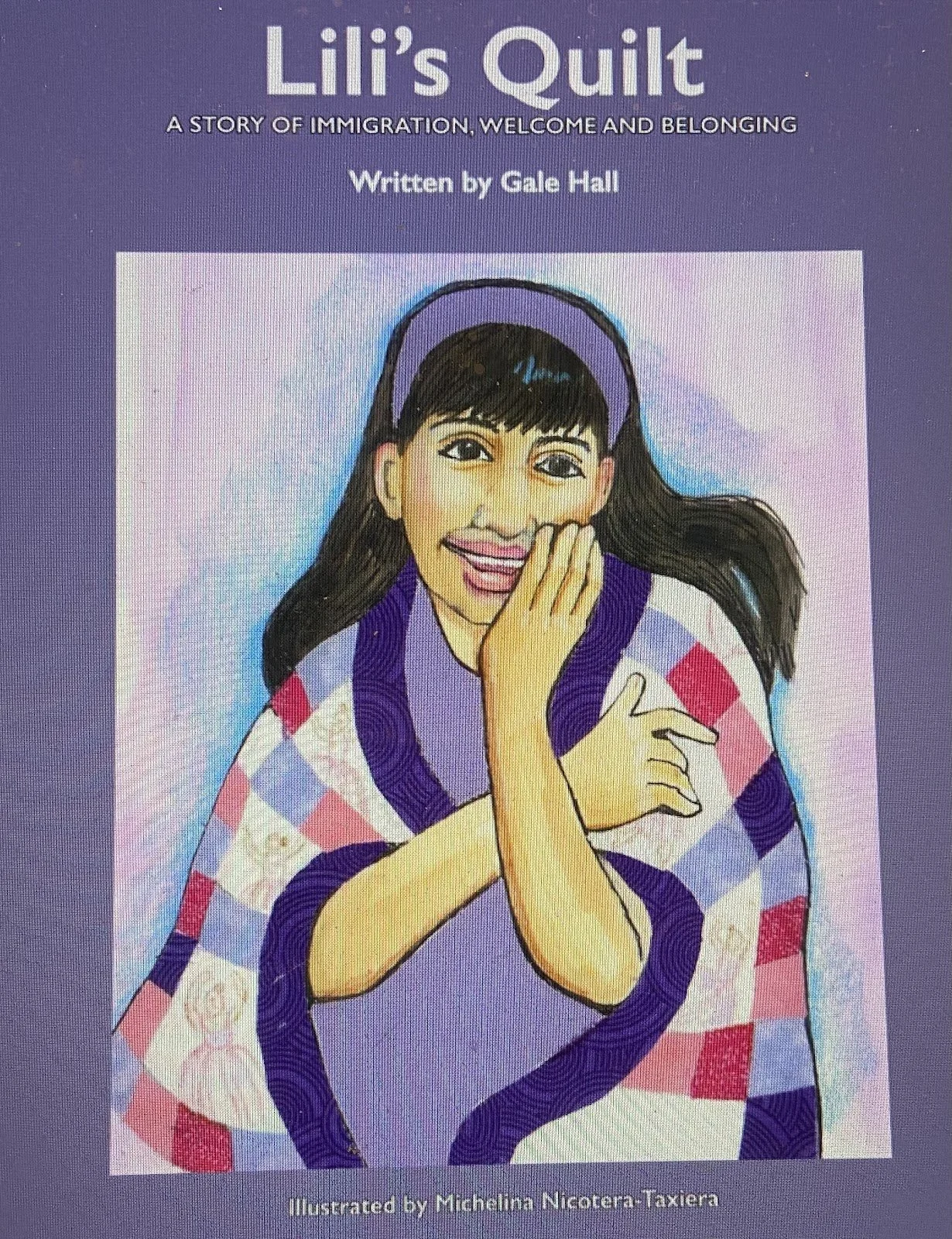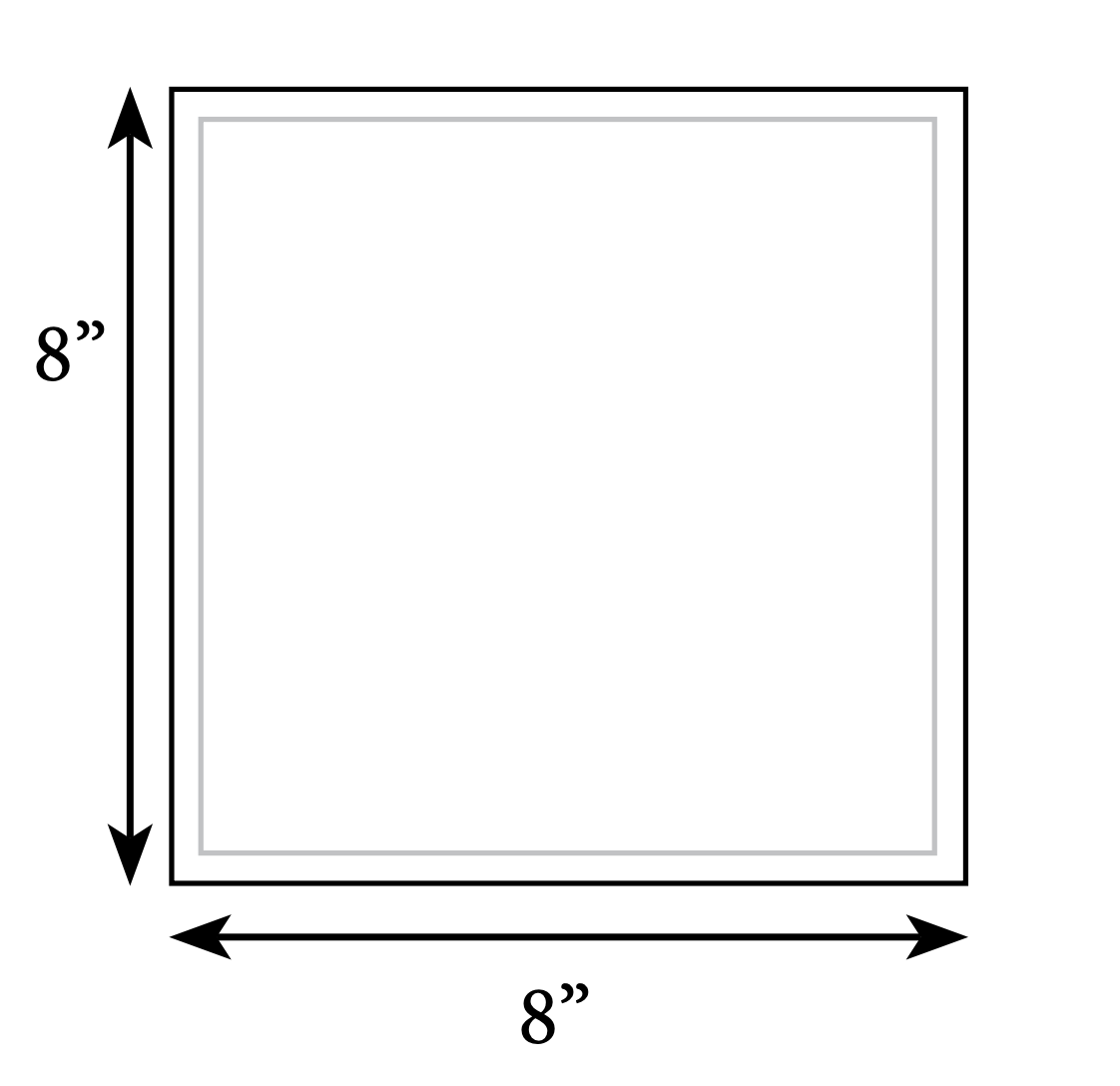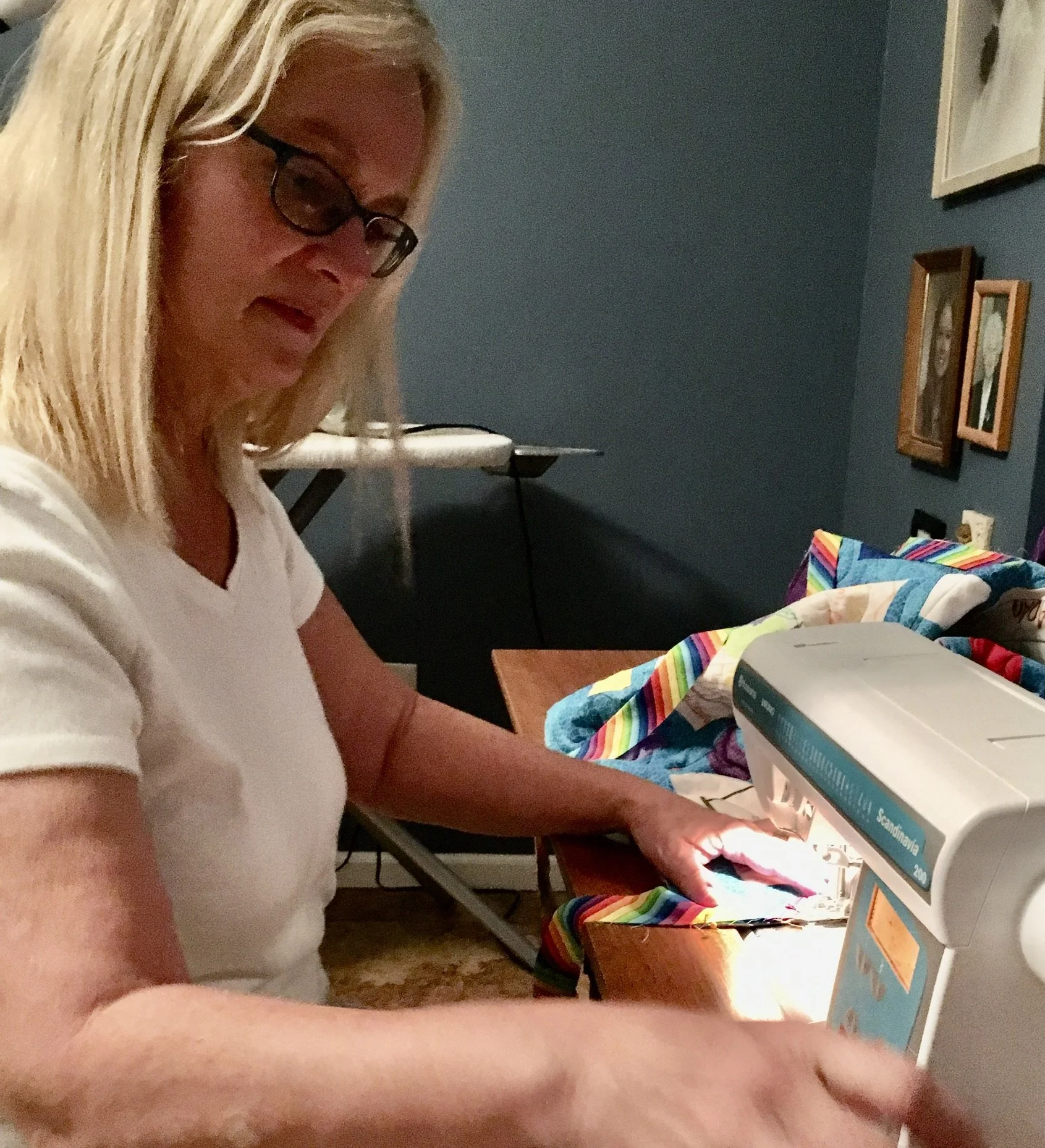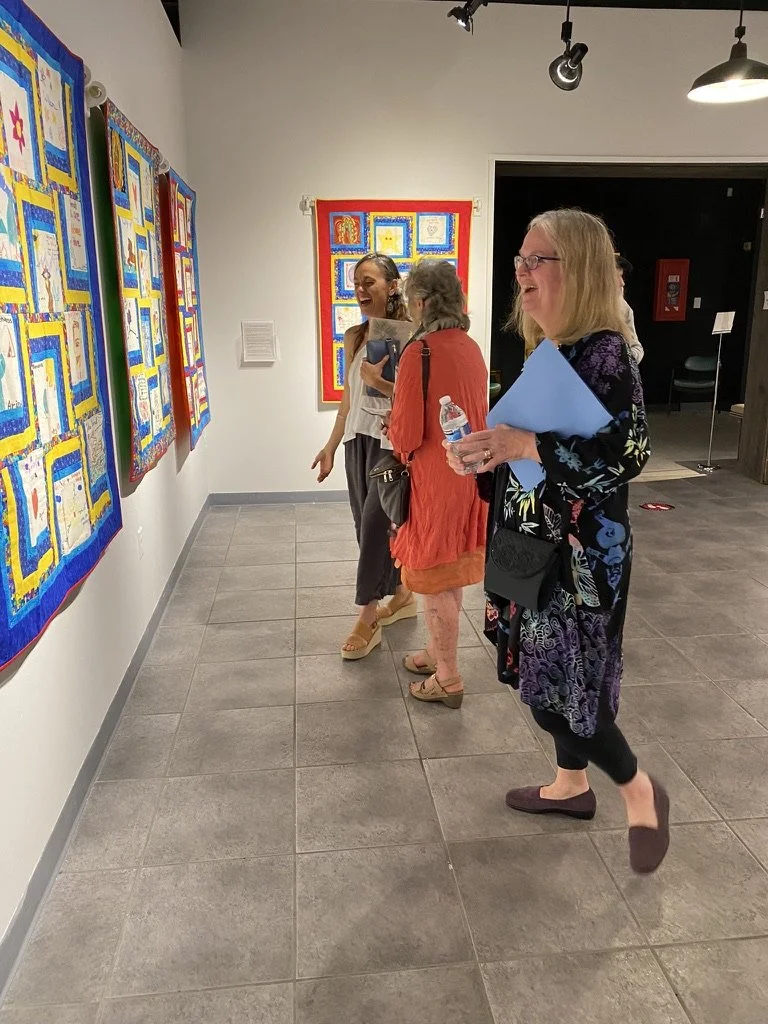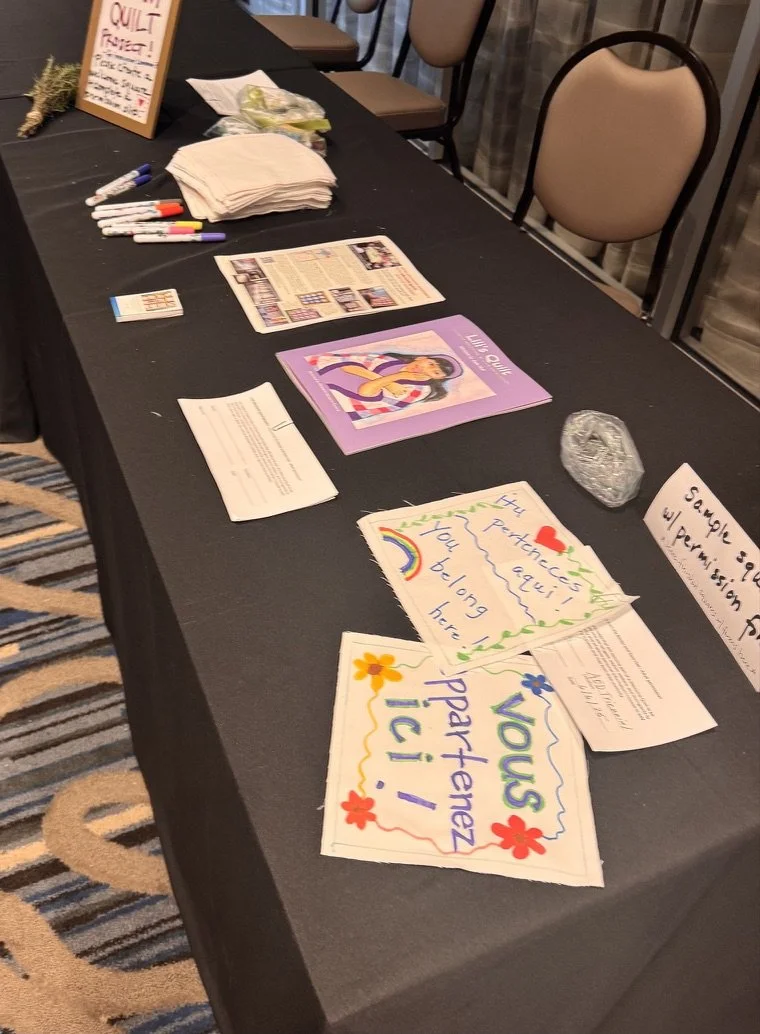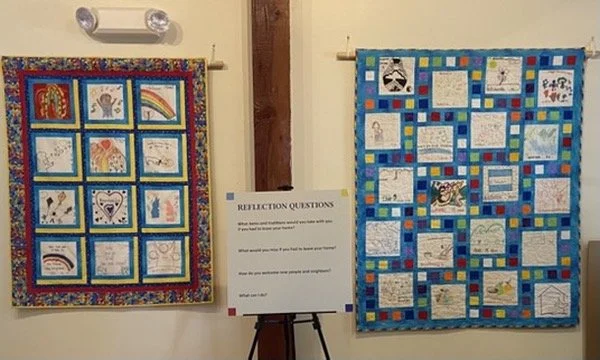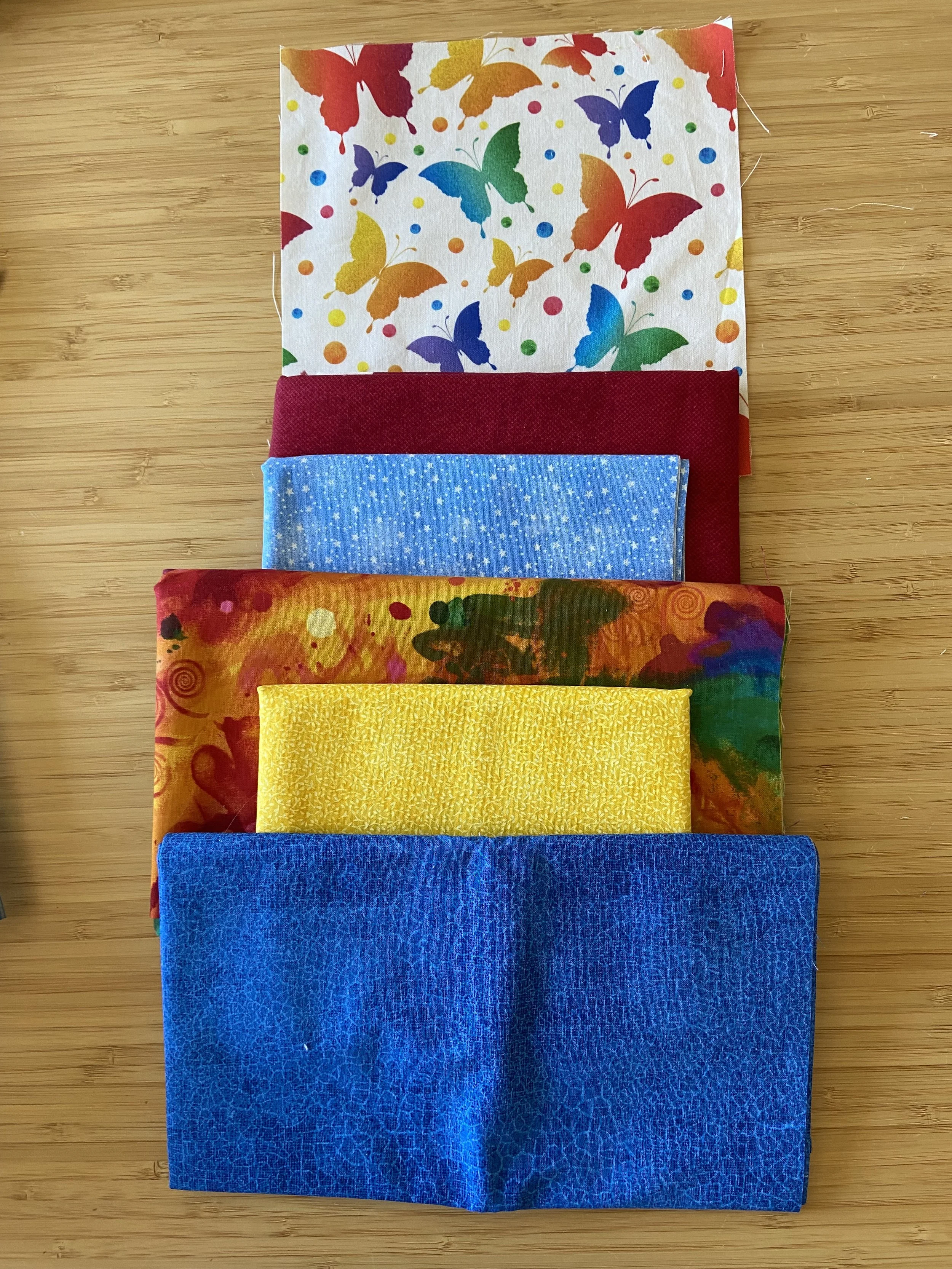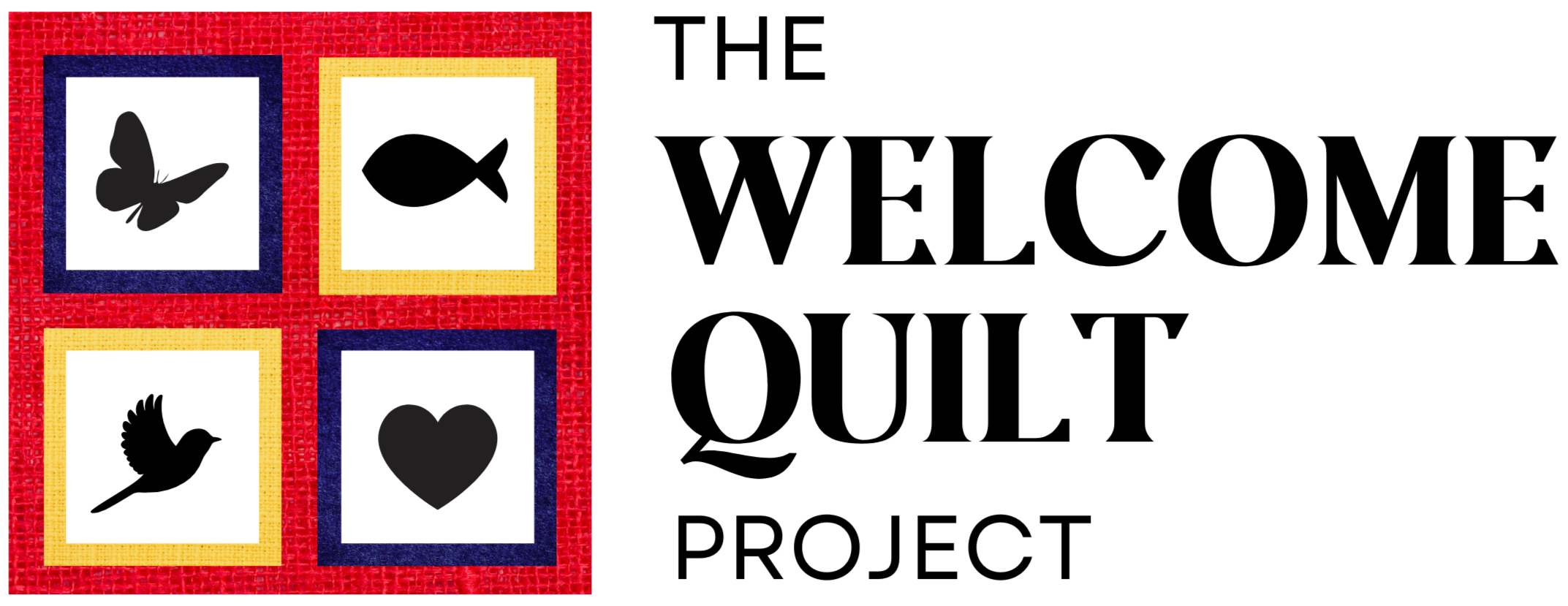HOW TO GET INVOLVED
Our project is not just about making quilts. Making and displaying Welcome Quilts is a key and important form of resistance to negative ideas about people who immigrate, but this project can also act as a vehicle to facilitate investigation and reflection on the whole topic of immigration, leading to other forms of positive activism. A comprehensive, empathy based set of activities has been developed by Gale Hall for just this purpose and is included in a complete Toolkit along with directions for making Welcome Quilts.
These activities can be used to facilitate discussions in small groups while making quilt squares. Other variations allow groups of children and adults to have a guided exploration of larger exhibits. Gale also wrote the book Lili’s Quilt: A Story of Immigration, Welcome, and Belonging, a companion to this project with additional activity and discussion ideas.
Scroll down this page to discover a few ways to become involved in this project. People around the country are finding their own creative ways to become part of this Welcome Quilt movement. Some are incorporating the idea into their existing work for social change. How could you bring this idea to your community?
1) MAKE A WELCOME QUILT & FIND A PLACE TO DISPLAY IT.
Gather some friends, family or neighbors together to make welcome squares. Seek out a quilter to sew them into a Welcome Quilt. Find a way to make the finished quilt visible to children and families who have immigrated or are requesting asylum. Even one Welcome Quilt displayed in the community can have a big impact.
You can find the directions for making a welcome square on page 12 of the Toolkit. While making the squares together, use the first and/or second activity starting on page 52 of the Toolkit to engage people in discussion and reflection on why you are doing this.
Nancy from Chicago made a Welcome Quilt with her grandsons that they displayed in their synagogue to help spread word of this project.
Downloadable Welcome Quilt Project Sign
Please copy and hang this Welcome Quilt Project Signs next to the Welcome Quilt that you display in your community.
At the bottom of the poster, you can add the name of the group or people who helped to make the quilt and why you decided to make it, if you choose.
2) UTILIZE THE EMPATHY BASED CURRICULUM
The empathy-based curriculum has several variations depending on who will participate. In Arizona, the curriculum met the K-12 academic standards. Tucson schools were able to organize field trips to the Arizona History Museum to tour the exhibit and participate in the program. You can also bring the program right into classrooms.
Lili’s Quilt is a children’s book about forced migration (written by Gale Hall and illustrated by Michelina Nicotera-Taxiera). It can be used as an integral part of the curriculum in multiple settings, even with adults. Lili’s Quilt follows the journey of Lili and her mother as they leave their home in Central America and travel to the United States seeking safety. Learn how Lili’s difficult journey was transformed by the welcome she received and how the gift of a quilt renewed her hope.
Information about the curriculum and activities starts on page 35 of the Toolkit. Lili’s Quilt can be ordered from Amazon.
3) MAKE WELCOME SQUARES TO CONTRIBUTE TO THE PROJECT
Drawing one or more welcome squares and sending them to The Welcome Quilt Project is an important contribution. It can help us create more quilts to loan out for exhibits or send to places like the Haitian Community in Springfield.
No art skill is required! Get the full instructions in the toolkit.
Welcome Square












4) BECOME A VOLUNTEER QUILTER
Contact the Welcome Quilt Project (WQP) to volunteer to assemble quilts from Welcome Squares people have created and donated to the project. The WQP will send you the donated squares, and you can find the directions for making the quilt starting on page 8 of the Toolkit. Purchase your fabrics using the guidelines provided in the Toolkit, make the quilt, and send the completed quilt back to the project. These quilts will be used to create additional exhibits of quilts that can be loaned out for displays around the country. To become a WQP quilter, please go to the Contact page, check that box, and submit the form.
5) BRING THE AZ HISTORY MUSEUM EXHIBIT TO YOUR TOWN
The Arizona History Museum will loan the original exhibit to museums, libraries, community centers and other (generally larger) venues in your area. It includes all the signage that tells the story of the development of the Welcome Quilt idea. You’ll get the original quilts – both quilts with drawings of children who have immigrated depicting what they love as well as the Welcome Quilts with messages from children and adults from around the country.
You can enhance your exhibit using the information found on the Supplemental Materials page of this website. You can approach venues in your area, let them know about the museum exhibit, and encourage them to borrow it. The WQP can work with you to prepare information about Welcome Quilts to present to venues and help you with discussions with the AZ History Museum, which now owns the original exhibit.
Starting on page 35 of the Toolkit you will find the curriculum that was created to engage student and community groups who attended facilitated field trips of the Welcome Quilt exhibit at the AZ History Museum. Use and adapt it to fit your local needs. You can encourage people who attend your exhibit to begin developing their own related programming.
6) DESIGN YOUR OWN EXHIBIT
You can borrow the quilts and materials from the Welcome Quilt Project to set up your own Welcome Quilt exhibit. You can stage such an exhibit in conjunction with other immigrant related activities such as Welcoming Week, or use it as a springboard to “get the conversation going” in your area.
The WQP can provide you with materials to print out signs for the exhibit as well as handout materials. You can incorporate information about local organizations and issues impacting immigrants in your community if you wish. You can also organize people in your area to make quilts from Welcome Squares made at your event so that you begin to develop quilts for your own local exhibits. The Toolkit will provide you with ideas for setting up and advertising your exhibit along with directions on making the quilts. The Toolkit also includes the many activities around empathy and belonging that you can choose from to do in conjunction with the exhibit.
Invite interested groups in your community to attend a facilitated “field trip” of your exhibit using activities in the Toolkit. For example, invite local college and university students who will be working with children and families who have immigrated as part of their program of study. After experiencing the exhibit and participating in the curriculum, they can reflect on applying what they learn to their practice. Invite local immigration volunteers to the exhibit to honor, celebrate, and rejuvenate them in the work that they do. Invite local school children to discuss why feeling welcomed and knowing they belong is important and how they can do that in their classrooms and schools.
We will work with you to help make your exhibit a success.
THE STORY OF THE FABRICS USED IN WELCOME QUILTS
The fabric used in the quilts was chosen intentionally after studying the stories that children told in their artwork at the Casa Alitas Welcome Center regarding their migration journeys and what they love.
COLORS
The turquoise fabric represents the same sky that covers all travelers both in the homes they left and in the new homes that they embrace.
The yellow fabric represents the sun that greets the morning providing power and inspiration to their journey by day.
The red fabric represents the flame of faith living in the hearts of the travelers that sustained them on their immigration journey.
PATTERNS
The twinkling stars fabric represents the light of hope guiding the traveler’s way by night.
The upper left-hand corner of the quilt has a square of butterflies, a symbol of migration. This square lets the viewer know that this is a Welcome Quilt for people immigrating to the United States.
The multi-colored fabric represents the beautiful colors of the natural world that have brought joy and love into the lives of travelers.
The white fabric squares are hand drawn by 11 different people and say, “Welcome. We are glad you are here.”
NOTE: LADY OF GUADALUPE - An image of the Lady of Guadalupe was used in the upper left hand square of the original Welcome Quilts. At that time, most families who were immigrating came from Central America where the Lady is a cultural and religious symbol. Now that people are immigrating from all over the world, the butterflies are more inclusive.
Contact Us
To find out how to create a Welcome Quilt that can be displayed in your local community center, hospital, food bank, place of worship, library, school or college campus, please fill out the contact form here or email Gale Hall at welcomequiltproject@gmail.com
